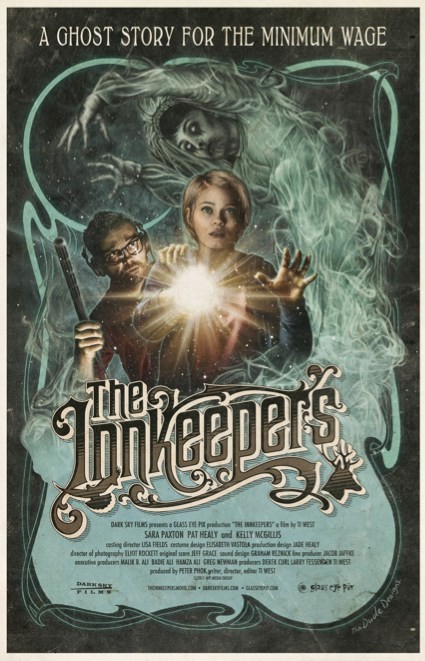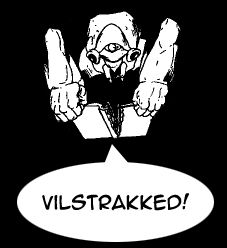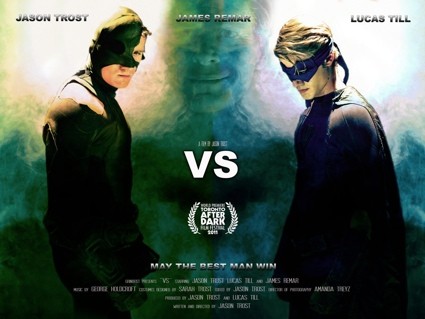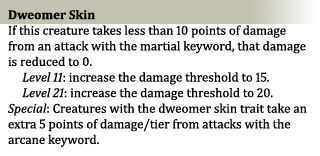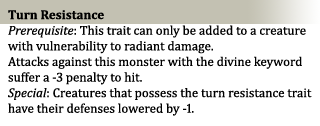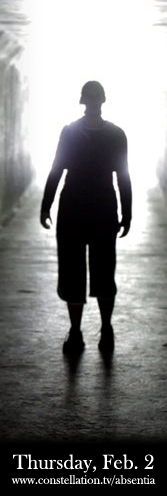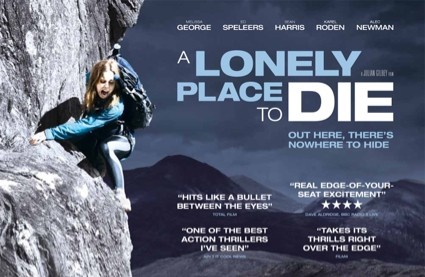These It Came from the DVR articles are going to be a little bit different. As an early Christmas present to myself, I picked up a festival pass to the Toronto After Dark film festival. So the first difference is that these are new movies, on the big screen, instead of old ones and niche programming on the small screen. The second difference is that these are going to be short. I’ve got eighteen films to see in seven days (as well as dressing up for the annual zombie walk), so I’m not going to have a whole lot of time to write, and I want post these while the blood is still fresh.
Toronto After Dark is a horror and genre film festival oozing with gobs of monster and rpg inspiration, but most of the films it showcases won’t see wide release – so in addition to extracting some rpg goodness from each movie, I’ll also give them a bit of a critique, so fellow gamers can know what they need to track down and what to avoid. I’ll try and keep spoilers to an absolute minimum.
The Corridor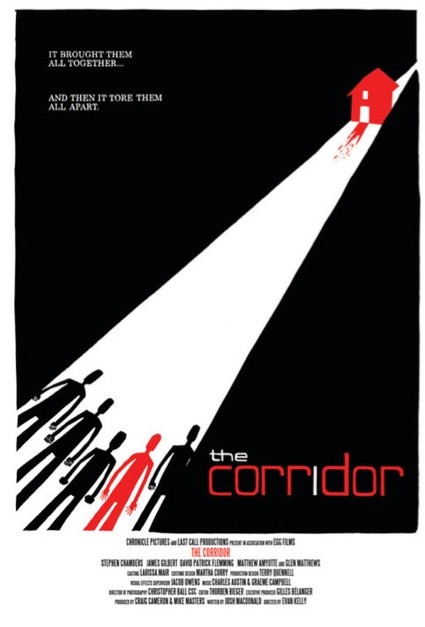
This science fiction/horror story follows a group of old high school friends, drifting apart from one another, as they reunite for a weekend of bonding at an isolated cabin in the middle of winter. Here they make contact with an otherworldly force, and are unprepared for the indelible changes it leaves on their psyches. As the strange force’s influence grows, the friends find their sanity stretched beyond the breaking point and their lives in peril.
Indie Horror Done Right, the Canadian Way
The Corridor is one of those films that I wish was made more often. It reaches beyond its budget, is well written, and makes a unique interpretation of a classic trope (the cabin in the woods) by adding a genuinely Canadian voice to the genre. That’s high praise, and The Corridor deserves it.
It’s an annoying stereotype to call Canada the ‘great white north’; however, the isolation of the north is something that holds a special place in the Canadian psyche (even a Toronto boy like me knows a few lines from Robert Service’s The Cremation of Sam McGee by heart). The Corridor does a great job of capturing that feeling on film – the sense of being trapped, the cold, and the peculiar way the snow seems to absorb sound. During the Q&A after the screening, director Evan Kelly admitted what a pain it was to shoot in the snow (once you’ve kicked through a snow bank, you can’t exactly reset the scene), but I’m glad they were ambitious enough to try on the limited budget the film had, because it paid off. Visually, it sets an appropriate tone for the film, with all that oppressive whiteness pressing in on the landscape and squashing the characters. Plus, the winter is a natural obstacle to the characters simply walking away from their problems, so The Corridor avoids some of the suspension of disbelief problems that a lot of cabin in the woods movies are burdened with.
I think that The Corridor’s ‘Canadian-ness’ goes beyond its wintry setting to the nature of the fear it explores. While most (American) cabin in the woods films (like Cabin Fever, or even, if the concept of isolation is stretched, The Divide) deal with the disintegration of groups into fractured, lone individuals, the alien force in The Corridor represents overwhelming integration into a group that violently overwrites the self. I think the argument can be made that a country’s national values also hold their secret fears, and if individualism is an American ideal/fear, then I think that you can say that collectivism is our Canadian ideal/fear.
Even though it takes a while for the blood to start flowing, Kelly avoids boredom by slowly turning up the tension between the characters. While most of us don’t have to deal with mental illness in our circle of friends (another credit to the movie is the deft hand with which schizophrenic Tyler is portrayed), the grudges, hurt feelings, and lines of alliance between the characters is something that we can all relate too (especially with a group of people who grew up together). It all works to make the characters believable, which gives the violence all the more impact when it explodes onto the screen (and there’s a couple of pretty gruesome scenes in there).
Watching The Corridor reminded me of the first half of Dreamcatcher, before it takes a left turn and Morgan Freeman starts chewing on the scenery (he wasn’t the worst culprit, but he was the most unexpected one), but that doesn’t really do The Corridor justice. I think a better comparison is to H.P. Lovecraft’s short story, The Colour Out of Space. The Corridor doesn’t have any forbidden colors (or any of the trappings of the Cthulhu mythos), but the portrayal of something truly ‘other’, and the madness that force invokes, has a very Lovecraftian feel. Portraying the ‘unknowable’ is even harder on the screen than it is on the page, but I was impressed with the route that The Corridor took, walking a tight line between explaining too much and leaving things so vague as to be meaningless. By the end I felt very satisfied with the story, and although screenwriter Josh MacDonald revealed in the Q&A that this was an aspect of the film he labored over, I never once felt the mystery was disingenuous or sloppy (as I’ve said before, two of my writing pet-peeves).
There were a few scenes where I thought the acting could use a little more punch, but in general the performances were good. Likewise, there were elements that could have been more polished (for example, the character Bobcat, who was supposed to be bald, had pretty visible stubble on his head for a lot of the film), but honestly those are things that I would have completely overlooked in a lesser film. I only looked for perfection because The Corridor set the bar so high.
The Corridor is highly recommended; watch it to see what Lovecraft might look like completely removed from all the Yog-Sothothery.
RPG Goodness
In my review of The Divide, I looked at how D&D’s class system, constructed for mutual reliance, can create tension and mistrust. While The Corridor shares The Divide’s isolation and social breakdown, it uses a mind-bending alien force as its catalyst, rather than the exposure of humanity’s base nature. In D&D terms, I think The Corridor’s approach still subverts the game’s reliance on teamwork, while avoiding the fallout that comes from permanently damaging the trust that holds a party together. Actually, D&D already does this, and has since 1e’s Monster Manual. The beholder, succubus, and mind flayer (as well as many others), all have powers that subsume the will of the individual, turn adventurers against one another, and create paranoia and dissent amongst the players. The key to these monsters though, is that they also remove responsibility from the player for the actions of her character. I’ve seen some pretty horrible things happen between characters due to these kinds of monsters, all while the players were laughing and having a good time. As an example, when I ran Rifts, one of my players was mentally enslaved by a mindolar (a giant, mind controlling slug) and forced to try whatever he could to get the other characters into the monster’s lair (so they could become slaves as well). His attempts almost worked, and rather than the rest of the party being angry, the event is cited as one of the greatest moments my players had in that game.
I think that both the approach I described in my review of The Divide (limited resources, restricted movement, and mistrust), as well as the one suggested by The Corridor can be combined together to make an interesting and memorable adventure (in the form of the adventure outline I promised in the earlier review).
Castaways of the Sargasso Prison
Overview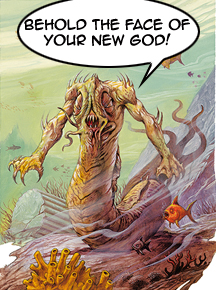
This is an event based adventure that takes place on board the ship Wandering Grail. After a failed pirate attack leaves the Grail without a captain, the ship becomes becalmed in a treacherous region of sargasso. The PC’s must deal with dwindling supplies, power struggles between the crew, and with the monstrous creature that controls the sargasso.
Adventure Hooks
This adventure is perfect to stage while the PCs are en route to a different adventure. Perhaps they have paid for passage to distant continent, or seek adventure in the ruins of a remote island. If the PCs are mercenaries, the Captain might hire them as guards since he (rightly) fears the pirates that ply the trade routes he must cross.
Major NPCs
Captain Maraver Fleetwind (female human fighter; Lawful Neutral/Unaligned) – The ornery and unpleasant Captain Fleetwind takes an instant dislike to the party (even if she hired them). She is an unforgiving task master, and works the crew beyond their limit.
First Mate Bellray Copper (male human rogue; Neutral Evil/Evil) – On the surface Bellray is pleasant, accommodating, and completely subservient to Captain Fleetwind (while apologizing to the PCs for her behavior). In truth, Bellray is an ambitious and bitter man who will go to any lengths to take control of the Wandering Grail (including the murder of his captain).
Quartermaster Quill Urthadar (female half-elven sorcerer; Neutral/Unaligned) – Although she has the official title of Quartermaster, under the controlling leadership of Captain Fleetwind, Quill is little more than a glorified cook (not that she minds). Quill is quiet and unassuming until the supplies begin to run low; then she begins secretly hoarding food and water as a tool to control the crew. Although she justifies this as a more reasonable alternative to Bellray’s rule, she is a little too comfortable choosing who will live and who will starve.
Abbhortha (advanced kopru; Lawful Evil/Evil) – This powerful undersea creature has recently learned a ritual to calm the winds above the sargasso-choked reef it uses as a lair. It hopes to stop passing ships in order to mentally enslave their crews, spread its influence and build a new kopru empire with Abbhortha at the centre.
Event: Pirates
After a few uneventful days at sea (during which time Captain Fleetwind undoubtedly earns the party’s ire and Bellray tries to befriend them), the ship is attacked by a group of opportunistic pirates. This encounter should be difficult, not only to reinforce the dangers the sea has to offer, but also to keep the party completely occupied by the fighting. While the party is defending the ship, Bellray takes the opportunity to backstab the Captain during the confusion. Depending on the actions of the PCs, one or more may witness Bellray’s treachery (although he is exceptionally sneaky, so he tries to avoid committing the assassination within their line of sight, and even if he does should be allowed a Hide or Bluff check opposed by the PC’s Spot or Sense Motive to cover it up).
Event: Alliances
Few mourn the loss of Captain Fleetwind, and protocol dictates that command of the ship falls to First Mate Copper. The PCs may oppose this, or try and take control of the ship themselves, but it is extremely difficult to convince the rest of the crew to support them (and the ship won’t run without their support). Even revealing the assassination does little to turn the ship against Bellray (give him a +5 circumstance bonus to opposed Diplomacy checks at this point).
Bellray knows the PCs are powerful adversaries and attempts to woo them to his side, all the while working out the best way to get rid of them.
Event: Becalmed
Not long after the death of Captain Fleetwind, the Wandering Grail’s course leads it above the reef of Abbhortha, who uses a magical ritual to calm the winds and strand the boat (magical or nature oriented PCs might notice the weather is unnatural with a difficult skill check: Nature or Arcana). Rowing the ship is possible, but is made increasingly difficult due to the sargasso weed in this region (it fouls the oars and applies either a cumulative -2 to skill checks or increasingly reduces the ship’s speed until it cannot move).
During this period Bellray’s twisted nature becomes more and more apparent as he inflicts cruel and barbarous punishments for the slightest infraction. Bellwind won’t actively move against the PCs until he is sure he has the superiority of numbers on his side and can win the fight with acceptable losses. Control of the crew is best resolved as an ongoing skill challenge between the other events, or as a series of opposed Diplomacy or Intimidate checks. The breakdown of the crew into opposed factions should evolve throughout the adventure (in this conflict all sides should be aware that killing too many of the crew is virtual suicide, since the ship needs a minimum amount of people to operate).
Event: Food and Water
Although the PCs and the crew might fish for food, water reserves quickly begin to run low (and the fishing is meagre at best). This is compounded by Quill’s ongoing theft of supplies. When one of the PCs begins to suffer from the effects of thirst or starvation give them an opportunity to catch Quill stealing, find her secret cache, or have her approach the PCs with the offer of rations for loyalty. How this plays out is entirely up to the PCs. They might side with Quill to depose Bellray, or the ship might split even further, into three competing camps. As long as she controls the supplies, Quill gets a cumulative +2 circumstance bonus to opposed Diplomacy and Intimidate checks for each day the crew goes without food or water.
Keep in mind if the party has access to magic that can create edible food or drinking water it can drastically alter the outcome of this encounter.
Event: The Testing
At an appropriate time, perhaps when the Grail’s crew are at an impasse, the ship is attacked by a motley assortment of aquatic monsters (merfolk, sahuagin, a sea-lion). These beasts are the thralls of Abbhortha, and he is using them to attack the ship with the intent of thinning out the Wandering Grail’s most capable defenders.
If they are still alive, both Bellray and Quill might take this opportunity to try and consolidate their power.
Event: An Offer from the Depths
With the crew weakened by infighting and the attack by its thralls, Abbhortha begins to personally venture onto the ship at night, using its mental powers to enslave and influence lone members of the crew. The compromised crew members will act strangely (and the PCs might detect the magical influence through appropriate spell or skill), cajoling and forcing their shipmates to submit to their ‘sea god’ (and bringing them before the monster during his nightly incursions for indoctrination). If enough of the crew are converted, Abbhortha will come aboard the ship permanently – sending out his minions to capture or kill any remaining crew members. Depending on the actions of the PCs, it is entirely possible one or more will fall under Abbhortha’s sway.
If Quill is still alive during this event, she desperately wants to be on the winning side of this disaster and willingly converts to Abbhortha’s cause – even going so far as to dump her stores of food and water overboard, since she believes the new sea god Abbhortha will provide and is eager to prove her faith. Bellray (if he is still alive) on the other hand, will never submit to the sea monster’s will. The first mate would rather die fighting than give up his hard won control of the Wandering Grail. Despite his vile nature, Bellray may be the PCs’ best ally in the fight against Abbhortha.
Concluding the Adventure
If Abbhortha is prevented from enslaving a critical mass of crew members, the creature cuts its losses and cancels the ritual of becalming, waiting for a more likely target to pass through its territory. If Abbhortha is gravely injured, the beast abandons its plans (cancelling the ritual) and flees back to the inky depths.
Either Bellray or Quill, if they are in charge of the Wandering Grail by adventures end, are eager to send the PCs on their way and never see them again.
Notes:
For a higher level version of this adventure simply replace Abbhortha with an advanced aboleth.
Traditionally, kopru are listed as Chaotic Evil, but I like to think that the prehistoric empire of the kopru, before their degeneration, was Lawful Evil – a part of its racial history megalomaniacal Abbhortha would be drawn to.

